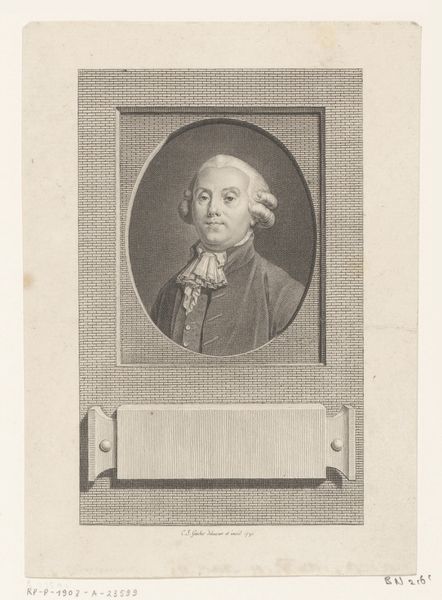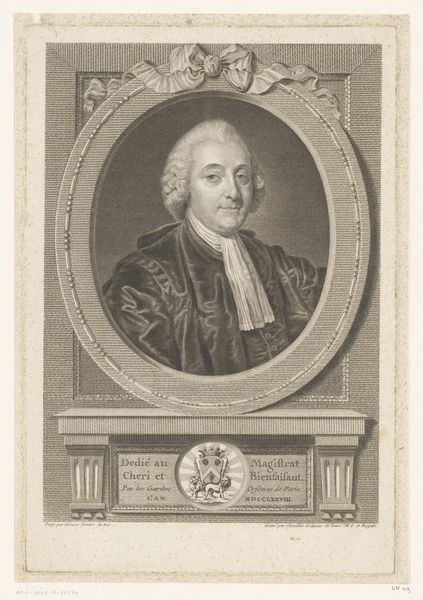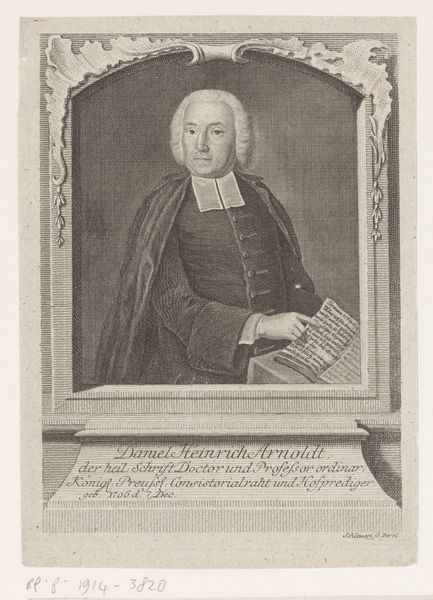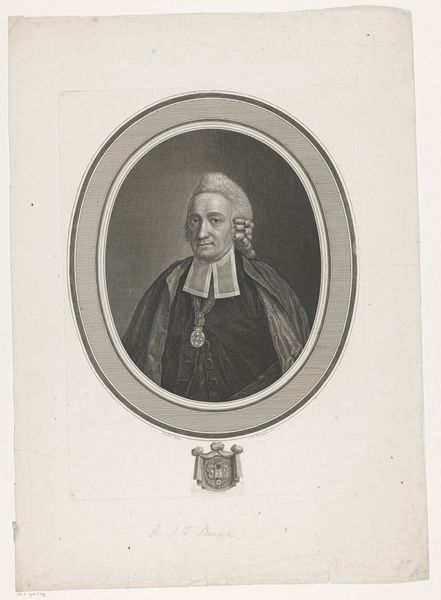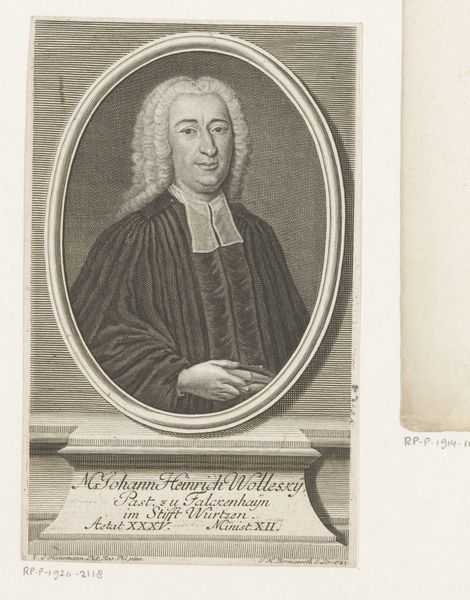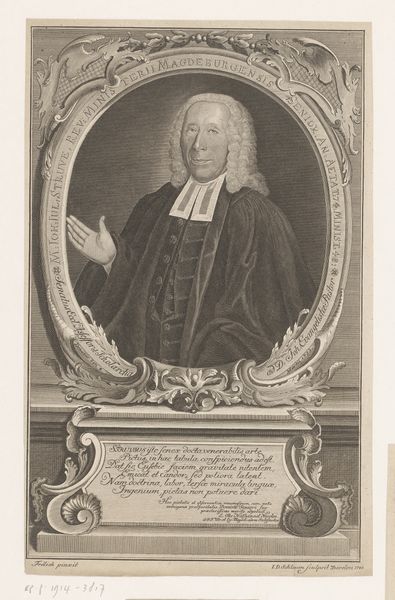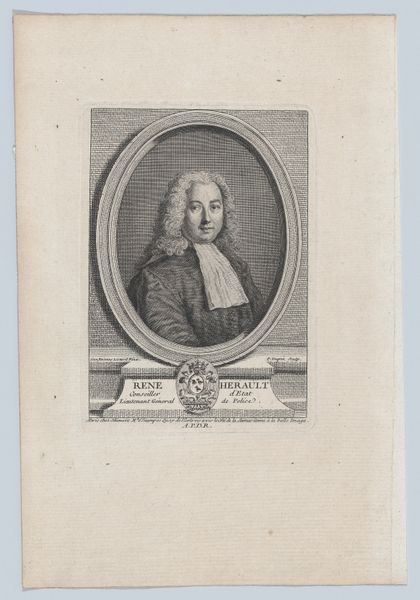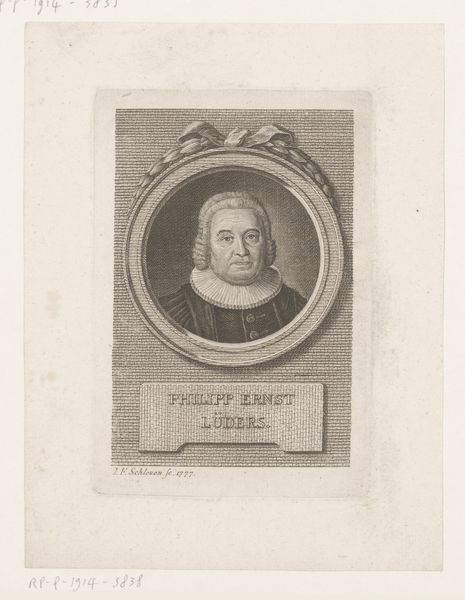
Dimensions: height 174 mm, width 108 mm
Copyright: Rijks Museum: Open Domain
Editor: This is "Portret van William Robertson," made sometime between 1752 and 1803 by Christian Gottlieb Geyser. It's an engraving, a print. It strikes me how the books and leaves at the bottom almost feel like the objects themselves, very tactile. What's your take? Curator: I see a fascinating intersection of the social status of William Robertson and the very means of reproducing his image. Engraving allowed for the wider circulation of Robertson’s image, but it’s also a process, a form of labor. Note the crispness and detail Geyser achieved—what does that precision communicate to us about societal values at the time? Editor: So, the process speaks to values? I hadn't thought about that. Does the material itself, the print, being relatively accessible, say something about shifting audiences for art and portraiture? Curator: Precisely. How does this compare to a painted portrait, something more exclusive? Engravings democratized representation to a degree. It provided access. Who could consume it? How was it consumed? We might also consider the materials - the paper, the ink - and how their production and trade networks intersect with broader economic and social structures. Editor: That makes me think about how a print like this might be used, displayed, even owned versus an oil painting. Maybe this was more portable, easier to share, less about wealth. Curator: Absolutely. Think about the skilled labor involved, not just Geyser's artistic skill, but also the paper makers, the ink producers, and distributors. This wasn’t simply about immortalizing a man, it was the culmination of varied productive practices. Do you think this knowledge alters your initial viewing of the work? Editor: It does, massively. Seeing it less as a picture of someone, but as a document of production and distribution. I hadn't considered it that way. Curator: Seeing the print through this lens reveals how deeply enmeshed art is with social and economic realities. The materials and processes open the door to a broader conversation.
Comments
No comments
Be the first to comment and join the conversation on the ultimate creative platform.
